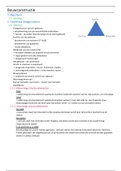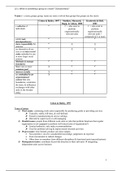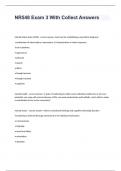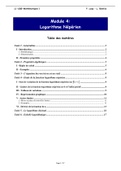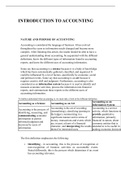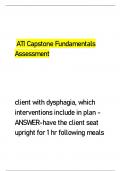Three way for results to be analysed:
Data processing
Graphs
Statistical tests
Evaluating results(link to):
● Measurement error: The difference between a measured value and the
true value.
● Systematic error: These cause readings to differ from the true value by a
consistent amount each time a measurement is made.
Sources of systematic error can include the environment, methods of observation
or instruments used.
Systematic errors cannot be dealt with by simple repeats. If a systematic error is
suspected, the data collection should be repeated using a different technique or a
different set of equipment, and the results compared.
● Random error: These cause readings to be spread about the true value,
due to results varying in an unpredictable way from one measurement to
the next.
Random errors are present when any measurement is made, and cannot be
corrected. The effect of random errors can be reduced by making more
measurements and calculating a new mean.
● Zero error: Any indication that a measuring system gives a false reading
when the true value of a measured quantity is zero, e.g. the needle on an
ammeter fails to return to zero when no current flows. A zero error may
result in a systematic uncertainty.
● Uncontrolled variables or confounding variables
● Accuracy: A measurement result is considered accurate if it is judged to be
close to the true value
● Precision: Precise measurements are ones in which there is very little
spread about the mean value.
Precision depends only on the extent of random errors – it gives no indication of
how close results are to the true value.
● Anomalous result
● Repeatable: A measurement is repeatable if the original experimenter
repeats the investigation using the same method and equipment and
obtains the same results.
● Reproducible: A measurement is reproducible if the investigation is
repeated by another person, or by using different equipment or techniques,
and the same results are obtained.
● Resolution: This is the smallest change in the quantity being measured
(input) of a measuring instrument that gives a perceptible change in the
reading.
● Uncertainty: The interval within which the true value can be expected to
lie, with a given level of confidence or probability, eg “the temperature is
20°C ± 2°C, at a level of confidence of 95%.
1
, ● Validity: Suitability of the investigative procedure to answer the question
being asked. For example, an investigation to find out if the rate of a
chemical reaction depended upon the concentration of one of the
reactants would not be a valid procedure if the temperature of the
reactants was not controlled.
Investigation into the effect of a named variable on the rate of an
enzyme-controlled reaction: The effect of temperature on the rate of
the reaction catalysed by trypsin
Possible other applications/independent variables for an investigation:
● Enzyme concentration
● Substrate concentration
● Temperature
● pH
● Inhibitors
Dependent variable:
The time taken for the to complete for either:
★ Substrate to be used
★ Product to be made
Control variables(one of them would be an independent variable, then rest of them are
controlled ones):
● Enzyme concentration (use same volume of enzyme in each test tube)
● Substrate concentration ( use same volume of substrate in each test tube)
● Temperature (ensure the temperature is constant and consistent for all test tube
and water bath)
● pH (use buffer solution, to maintain pH stable and consistent in all test tubes)
● Inhibitors (do not add inhibitor solution?)
Effect of temperature (semi-quantitative)on the rate of the reaction catalysed
by trypsin
1. Using a marker pen, write an ‘X’ on the glass halfway down one side of each of three
test tubes.
2. Add 10cm3 of the solution of milk powder to each of these three test tubes.
3. Add 2cm3 of trypsin solution to 2cm3 of pH 7 buffer in another set of three test tubes.
4. Stand the three test tubes containing the solution of milk powder and the three test
tubes containing trypsin and buffer in a water bath at 20°C.
5. Leave all six tubes in the water bath for 10 minutes.
6. Add the trypsin and buffer solution from one test tube to the solution of milk powder in
another test tube.
7. Put a bung or cork in the test tube and invert about 5 times to mix thoroughly.
8. Put the test tube back into the water bath.
9. Repeat steps 6 and 7 using the other test tubes you set up.
10. Time how long it takes for the milk to go clear. Do this by measuring the time taken to
first see the ‘X’ through the solution.
11. Record the time for each of the three experiments.
12. Using the same method, find out how long it takes the trypsin to digest the protein in
the solution of milk powder at 30°C, 40°C, 50°C, 60°C.
13. Record your data in a suitable table.
14. Process your data and draw a graph of your processed data
2
, Effect of
temperature/pH/concentration
with calorimetry(quantitative)
1. Leave all six tubes in the
water bath for 10 minutes. While you
are waiting, set up a colorimeter. Use
the trypsin solution as a blank to
calibrate the colorimeter to zero
absorbance.
2. Add the trypsin and buffer
solution from one test tube to the
solution of milk powder in another test
tube.
3. Put a bung or cork in the test
tube and invert about 5 times to mix
thoroughly.
4. Put the test tube back into the
water bath. Time the reaction for
exactly 4 minutes. Pour the contents
of the tube into a cuvette and measure
the absorbance immediately.
5. Repeat steps 6, 7 and 8 using
the other test tubes you set up.
6. Record the absorbance for
each of the three experiments.
7. Draw graph absorbance vs
temperature/pH/concentration
The lower the absorbance reading,
the more casein has been broken
down.
Calorimetry:
Benedict’s test contains Cu2+ ions,
reducing sugar by donating one
electron to Cu2+, so it becomes Cu+,
and red precipitate is formed. Due to this, Benedict's solution becomes less blue. So we
measure absorption of red light by this new “less blue” solution. It tells the concentration of
reducing sugar present:
● High absorption means, less reducing sugar is present
● Low absorption means, more reducing sugar is present
Method Limitations:
1. The end-point was subjective which leads to inaccurate time taken measurements
(1.)The time for the cross to become visible is subjective and depends on the person
viewing.
2. The water bath was not thermostatically controlled and therefore the temperature
decreased during the practical
3. Not enough intermediate pH values were tested to accurately identify the optimum pH.
4. The range of tested pH values was not wide enough as the point at which trypsin
denatured was not identified jeg test beyond pH 11).
3

